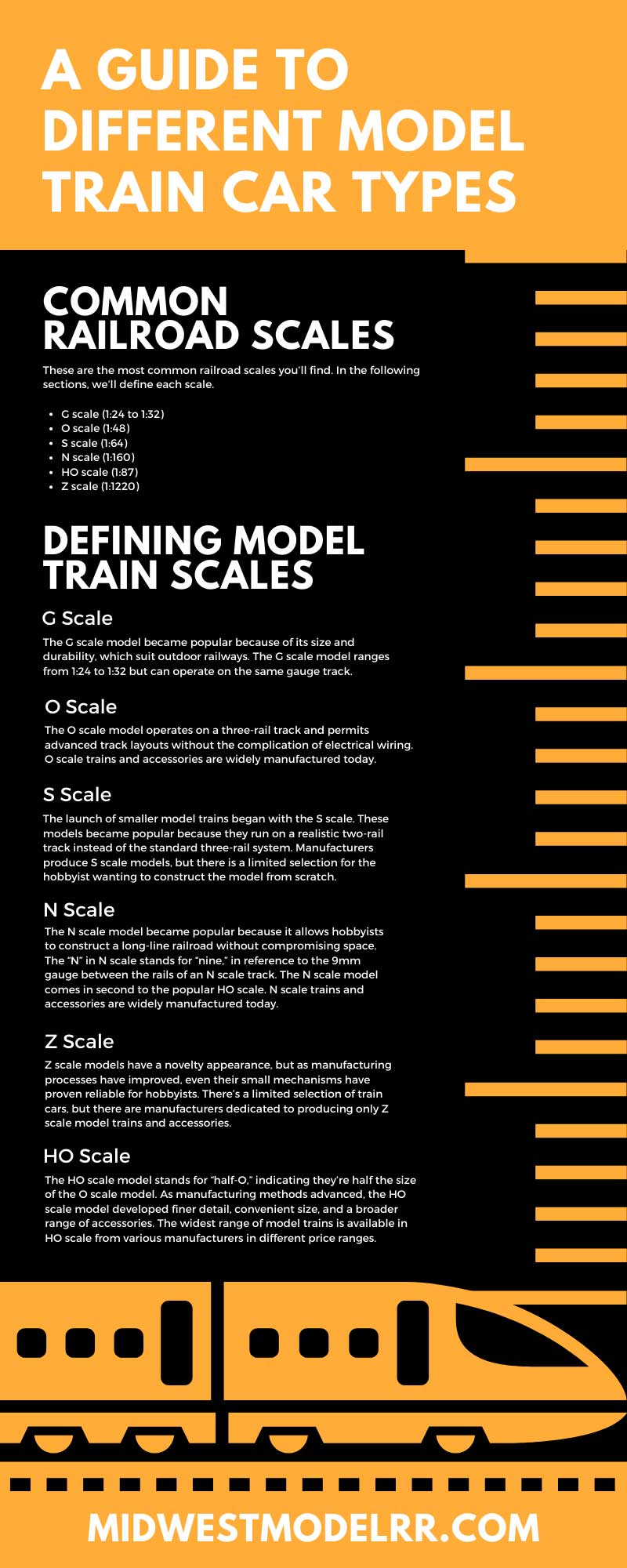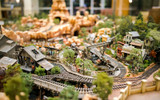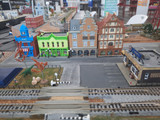A Guide to Different Model Train Car Types
Since the late 19th century, the model train car has evolved into a variety of sizes, shapes, and styles. If you’re beginning your model railroading journey, you’ll discover model train car types are distinguished by scale and gauges. When model trains entered the market, there was no standard size, which led to manufacturers producing a system of train scales.
These common model railroad scales provided a standard for model trains and made it easier to operate different models on the same tracks. Below, we provide a guide to different model train car types, an outline of common scales, and how these different model trains vary by design.
Defining Scale and Gauge
Model trains come in different sizes; these sizes are commonly referred to as “scales.” The scale of a model train provides a ratio of the object’s relative size in proportion to the real model. The measure of the relative size in proportion to the real thing is also referred to as the “prototype.” For example, if a model train has a scale of 1:87, it indicates that the model is 87 times smaller than a real, life-size train.
The gauge refers to the distance between the rails, and the type of model train car determines the measure of distance required. For example, the standard gauge of rails in the real world measures 4 feet and 8.5 inches between rails. In the model train world, the track gauge measures .625 inches wide, scaled in proportion to the real thing.
Common Railroad Scales
These are the most common railroad scales you’ll find. In the following sections, we’ll define each scale.
- G scale (1:24 to 1:32)
- O scale (1:48)
- S scale (1:64)
- N scale (1:160)
- HO scale (1:87)
- Z scale (1:220)
Defining Model Train Scales
G Scale
The G scale model became popular because of its size and durability, which suit outdoor railways. The G scale model ranges from 1:24 to 1:32 but can operate on the same gauge track.
O Scale
The O scale model operates on a three-rail track and permits advanced track layouts without the complication of electrical wiring. O scale trains and accessories are widely manufactured today.
S Scale
The launch of smaller model trains began with the S scale. These models became popular because they run on a realistic two-rail track instead of the standard three-rail system. Manufacturers produce S scale models, but there is a limited selection for the hobbyist wanting to construct the model from scratch.
N Scale
The N scale model became popular because it allows hobbyists to construct a long-line railroad without compromising space. The “N” in N scale stands for “nine,” in reference to the 9mm gauge between the rails of an N scale track. The N scale model comes in second to the popular HO scale. N scale trains and accessories are widely manufactured today.
Z Scale
The Z scale model is the smallest practical model and was named the final letter of the alphabet to suggest no smaller train exists. Z scale models have a novelty appearance, but as manufacturing processes have improved, even their small mechanisms have proven reliable for hobbyists. There’s a limited selection of train cars, but there are manufacturers dedicated to producing only Z scale model trains and accessories.
HO Scale
The HO scale model stands for “half-O,” indicating they’re half the size of the O scale model. As manufacturing methods advanced, the HO scale model developed finer detail, convenient size, and a broader range of accessories. The widest range of model trains is available in HO scale from various manufacturers in different price ranges. The HO scale model continues to be one of the most popular trains enjoyed by hobbyists today.
Differences Between Model Trains
There’s a variety of elements outside of sizing that differentiate model train types. Understanding the key elements, such as accessibility to parts, project layouts, and overall cost, can help determine the ideal model train type for a hobbyist.
G scale
The G scale model provides a large and robust layout for hobbyists who want to incorporate the model outdoors. The layout for the G scale model can include scenic elements like plants or running water.
O scale
The O scale model contains a sophisticated engine and a variety of separately applied parts. The O scale model operates on a three-rail track system that offers a scope for a complex track layout. The O scale model suits novelty collectors among the hobbyist crowd.
HO scale
The HO scale model is the most popular scale in the model train industry, providing the widest range of trains and accessories at half the size of the O scale model. The option to combine greater detail and more high-quality accessories provides a versatile experience for new and seasoned hobbyists alike.
S scale
The S scale model provides a more realistic display with a two-rail track system. Modern S scale railroading has a diverse range of models in both narrow and standard gauges. The S scale model has been known for being sized between the larger O scale model and the HO model. The size of the S scale model makes it ideal for both model and scratch builders.
N scale
The N scale model provides one of the smallest scales yet features a diverse range of N scale train cars and accessories. The N scale model measures half the size of the HO scale model and has compact dimensions to suit larger project layouts without consuming more space. N scale models have a versatile quality that suits hobbyists from beginner to expert level.
Z scale
The Z scale model offers the smallest available model railway scale. The advantage of using the model is being able to fit more trains and accessories within the same physical layout of a large-scale project.
The diminutive size of the Z scale model also permits longer trains and broader curves that appear more realistic than in larger scales. The quality and accurate design of the Z scale model make it ideal for novelty collectors.
After exploring the previous guide to different model train car types, it’s easier to understand how numerous manufacturers have continued to contribute a variety of model trains and accessories to the hobbyist market of model railroading. As the manufacturing process advances, there’s a higher demand for model train cars to resemble the authentic versions. The advancements have allowed modern hobbyists to invest in models that vary in scale and price ranges but provide maximum enjoyment in the art of model railroading.

Recent Posts
-
Unveiling the Imaginative World of Fictional Railroads: Where Creativity Meets the Rails
Model railroading has long been a hobby rooted in historical accuracy and meticulous attention to de
-
Creating Your Model Railroad: Step-by-Step Guide to Laying Track
Model railroading is a fascinating hobby that allows enthusiasts to recreate miniature worlds of rai
-
Crafting Depth: Elevating Your Model Railroad Layout with Dimensional Techniques
Transforming a simple model railroad layout into a captivating and immersive world requires more tha




